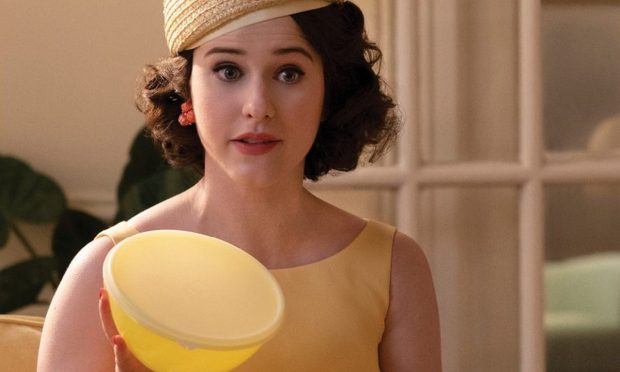Tupperware Turns to Amazon for a Comeback

After encountering financial difficulties last month, Tupperware, a trailblazing direct-to-consumer (D2C) brand, has implemented some inventive marketing and sales strategies, one of them being the launch of its Heritage Collection bowls.
In celebration of the fifth and final season of “The Marvelous Mrs. Maisel” on Prime Video, Tupperware has launched its iconic Heritage bowls in vintage colorways on Amazon, encouraging fans to “Stock your fridge like Midge.”
Tupperware became an iconic brand after it was founded in 1946. “The Marvelous Mrs. Maisel,” which began streaming in 2017, has also captured viewers’ hearts with the journey of Midge from a housewife to a stand-up comic. Rachel Brosnahan’s portrayal of a quirky character strikes a relatable chord as she navigates life as a wife, mother and intelligent woman determined to carve out her own path in the 1950s and ’60s when Tupperware parties were common.
During the fourth season, Midge faced financial difficulties following a setback in her career, which led her to become a Tupperware representative and host traditional Tupperware parties to sell the storage containers.
The Tupperware Heritage Collection, inspired by the mid-century designs promoted by Midge, comprises five bowls with pastel colors and Tupperware’s iconic sunburst lid pattern. The bowls are crafted to be stackable when lidded and nestable for compact storage when not in use. Despite their vintage-inspired appearance, they are listed as dishwasher-safe.
From Icon Status to Struggling D2C Brand
Last month, PYMNTS reported on the financial instability of the container company based in Orlando, Florida.
In a regulatory filing, the company expressed “substantial doubt” about its ability to sustain operations and said it is seeking financial assistance with the aid of advisors. Tupperware noted that it is also exploring cost-cutting measures, such as reevaluating its real estate holdings.
With that in mind, if Tupperware fails to secure additional funding, the company indicated it might have to suspend its business operations due to inadequate cash reserves to sustain its activities.
“Tupperware has embarked on a journey to turn around our operations and today marks a critical step in addressing our capital and liquidity position,” said Tupperware Brands President and CEO Miguel Fernandez in an April 7 press release. “The Company is doing everything in its power to mitigate the impacts of recent events, and we are taking immediate action to seek additional financing and address our financial position.”
The Original D2C Company
Tupperware, like Avon, used hostess parties as a platform to promote and sell its products, making it an early adopter of direct marketing. Hostesses who invited their friends to attend these parties were provided with incentives, resulting in a personalized and intimate sales encounter.
During the 1950s, Tupperware parties became a widespread cultural trend, with women throughout the United States frequently attending them. Tupperware’s D2C strategy was hugely effective, propelling the company’s rapid expansion.
Tupperware became a household name by the late 1950s, largely thanks to the efforts of its 9,000 independent consultants — mostly women — who generated $25 million in sales in 1954. Tupperware achieved this success without relying heavily on advertising, by both stereotyping and empowering women.
How Tupperware Is Striving for Relevance in Today’s Market
According to Neil Saunders, a managing director and retail analyst at GlobalData Retail, Tupperware is no longer at the forefront of product innovation.
However, the company is making efforts to expand its retail sales channels and reach a more diverse audience by moving away from its traditional image. For instance, in 2021, Tupperware broadened its ECO+ product range with the addition of Tritan Renew from Eastman to provide more environmentally friendly options.
In summer 2022, Tupperware collaborated with bag manufacturer Vera Bradley to produce a lunchbox set that included a water bottle, sandwich keeper and two snack holders. In October of that year, the company formed a partnership with Target.
What’s Next?
Tupperware may not be hosting parties, but could it expand its partnerships beyond brand collaborations like others?
The Fresh Market, for one, announced in March a partnership with celebrity chef Anna Rossi, who took on the role of brand ambassador and spokesperson.
Could Tupperware’s next partnership follow a similar path?

